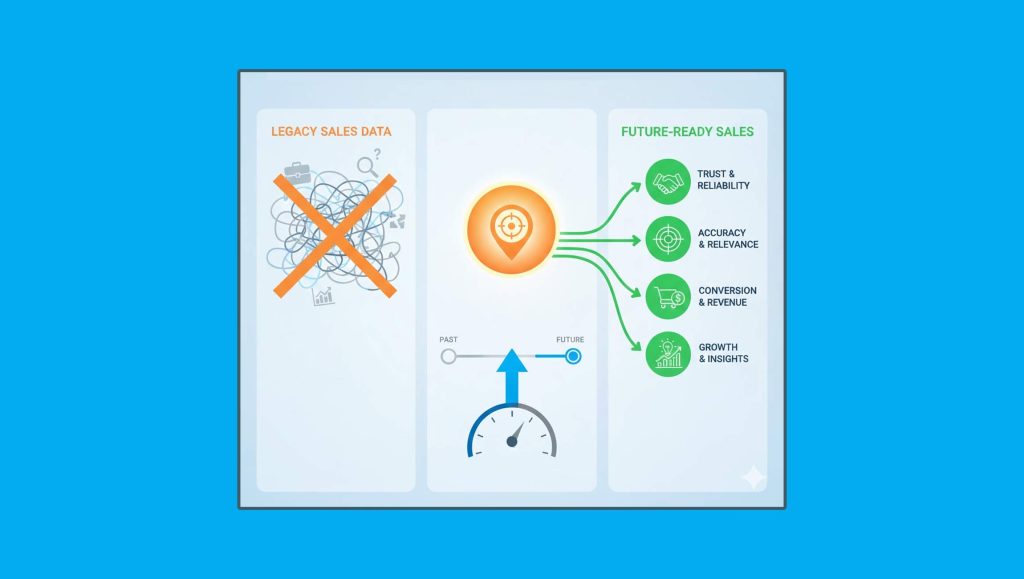As a sales trainer, ed tech startup executive and marketing professor at Bryant University, I speak with sales and revenue leaders every day, giving me a special window into their priorities and frustrations. One of their biggest challenges they tell me about is when a sales conversation goes off the rails, especially when it is getting more difficult to get sellers in front of decision makers.
This destroys deals, so getting sales conversations right is especially valuable to organizations. Because when deals don’t happen, eventually, the company won’t happen, and everyone loses their job on that journey.
Sellers have a variety of challenges when interacting with customers, but these are the most common concerns I hear from sales leaders with some tips on how you can improve your conversations to overcome them.
Challenge 1: The Discovery Dilemma
Blindsided by a deal that goes south in the 11th hour? This isn’t a closing problem, it’s a discovery problem. The salesperson didn’t truly qualify the client. They didn’t find out if the client was looking at other options or discover where those alternative vendors fell short. They didn’t understand the decision criteria or why the timeline mattered. In other words, they didn’t ask the right questions to uncover the true motivations for solving the problem.
To avoid this pitfall, dig deep. Understand the client’s decision criteria, their timeline, and the alternatives they’re considering.
Challenge 2: Pitch timing is everything
Launching into your pitch without understanding the prospect’s needs? That’s a recipe for disaster.
Many sellers jump straight into their pitch without engaging the other party, leading to a disconnect.
Instead of pitching, start by asking questions. Understand what the other person wants before diving into your presentation. Customize your talk track to address what’s important to the other person. Bring them along by asking questions like, ‘Does this make sense?’ or ‘Can you see how this will help you reach your goal?’
Try the UDEA method:
– Understand what they want.
- Don’t assume you know what they want; and don’t assume they do either! Ask probing questions to understand not just their problem, but what they are doing to solve it, who they are talking to, which criteria they are considering in a solution and how all of those efforts are going.
– Dig deeper to find out why it’s important.
- Ask even more questions! Knowing what’s important to them is…important. But so is understanding why. The solution they think they need may not be the best one for them. Find out who else is impacted and how much urgency there is in finding a solution.
– Show Evidence that your proposal will meet their needs.
- Once you understand the ‘why’ that goes along with the ‘what,’ show how your proposal will help them reach their desired result. Concrete examples like case studies with data can help, and good storytelling is key. Walk them through their ideal scenario and show how you can help them get there.
– Get Agreement that they believe in your solution.
- This is where you both align that your proposal will help them solve their problem. This alignment is crucial to closing the deal. If they can articulate how your proposal will working for them, it will reinforce that it’s the right solution for them.
Read More: SalesTechStar Interview with Dorian Ciavarella, Founder and CEO at Zeliq
Challenge 3: Handling Objections
New sellers often struggle with asking for the deal because they fear rejection. It’s easy to confuse an objection or pushback with rejection. However, it’s simply a request for more information.
Use pushback to your advantage with the UVEA method:
- Understand the concern by clarifying and asking for more details.
- Be sure you understand their needs. You might need to ask for more details or more clarity, but by digging deeper into their needs – and their concerns or worries – can set you up for success even this early in the process.
- Validate their feelings.
- You don’t have to agree with pushback, but you need to acknowledge the reasons for their objections. Empathizing with their point of view will build the trust they crave.
- Provide Evidence that addresses their concern.
- This is where you can provide proof that you can deliver on what they need by using past examples and metrics that show your experience in solving similar problems.
- Get Agreement that your solution addresses their need.
- Evidence alone isn’t enough to close the deal. They must agree that the evidence you provided shows that you can deliver a solution to their problem.
It’s not enough to know these strategies—you need to practice them. Bridging the gap between knowing what to do and doing it effectively when it counts is crucial to enhance communication, build better relationships, and achieve your goals more effectively. Remember, every conversation is an opportunity—make the most of it.
Read More: Accelerating the Deal Cycle with GenAI-powered Proposal Workflow




















